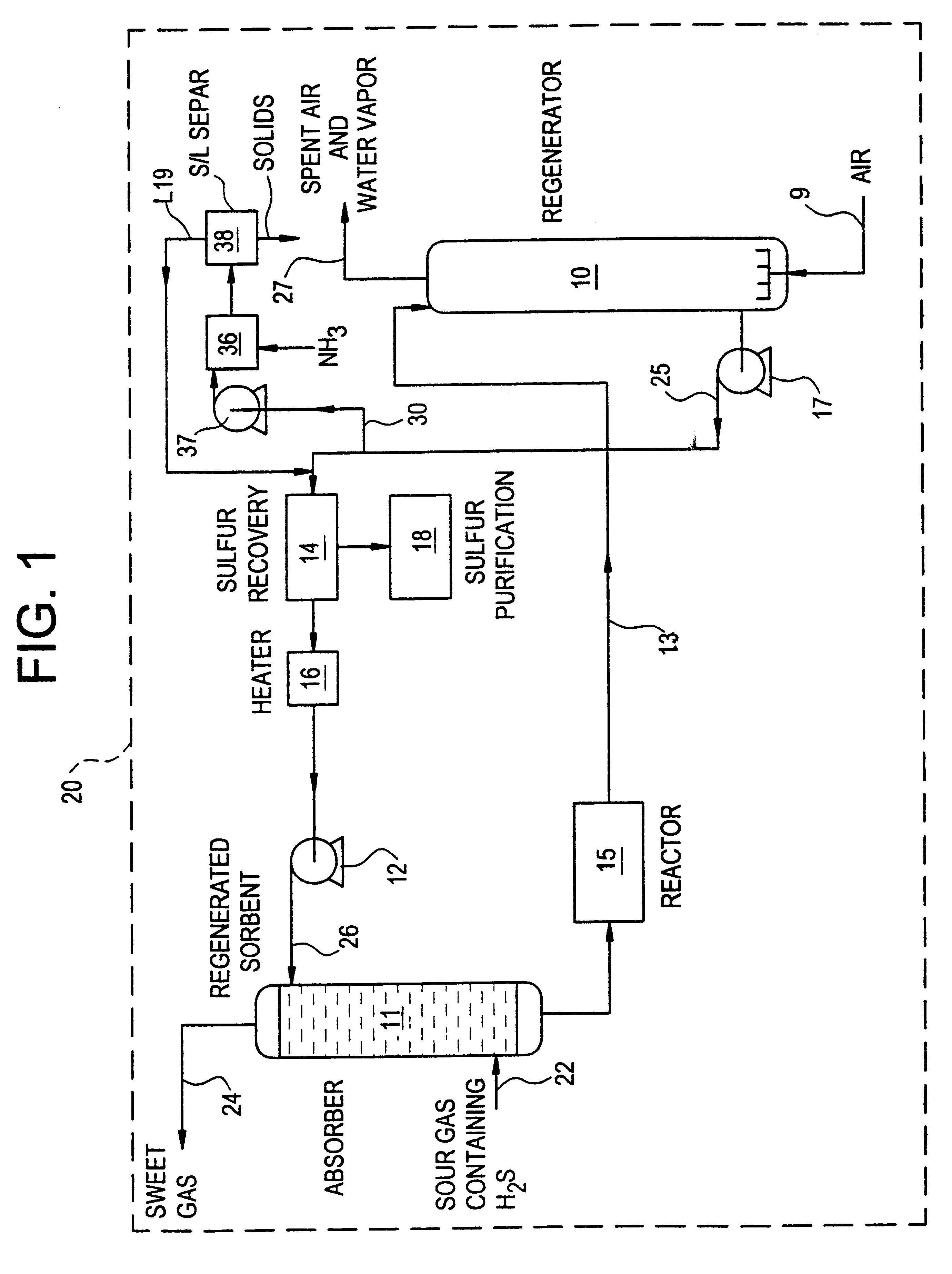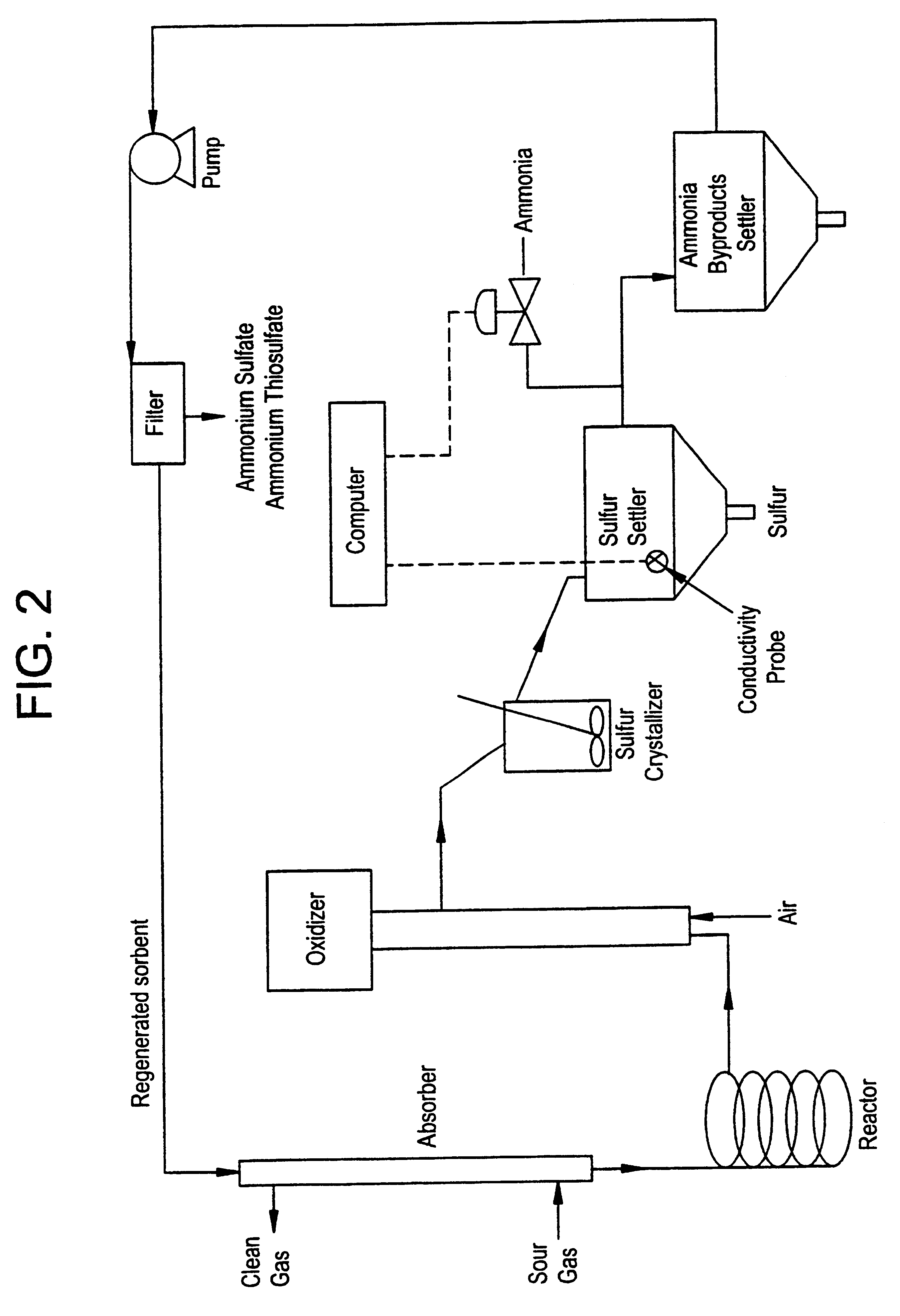Regeneration method for process which removes hydrogen sulfide from gas streams
a technology of hydrogen sulfide and gas stream, which is applied in the direction of hydrogen sulfides, sulfur preparation/purification, separation processes, etc., can solve the problems of achieve the effect of economic favorable removal process and reducing the electrical conductivity of the solution
- Summary
- Abstract
- Description
- Claims
- Application Information
AI Technical Summary
Benefits of technology
Problems solved by technology
Method used
Image
Examples
examples
Batch Test with Synthetic Byproduct Solution. To simulate a byproduct solution containing sulfate, a 0.25 mL aliquot of concentrated sulfuric acid was added to 50 mL of a solution of 7% (v / v) N-methyldicyclohexylamine, 25% benzyl alcohol and 68% Therminol 59 (Monsanto trade mark). Before the sulfuric acid was added, the solution pH was 8.2 and the conductivity was 0.007 microS (microS=microSiemens); after the addition, the pH was 6.18 and the conductivity was 0.53 microS. The mixture in this reaction vessel was seeded with 1.00 g of ammonium sulfate solids. Ammonia gas at a flow rate of 20 cc / min was then added to the solution while monitoring the pH via a glass electrode and the conductivity of the solution using a conductivity probe. During this addition, the solution conductivity fell and the pH increased. The final conductivity was 0.05 microS and the pH rose to 9.28 after the addition of 180 cc of ammonia gas over a nine-minute period. The decrease in conductivity is indicative...
PUM
| Property | Measurement | Unit |
|---|---|---|
| temperature | aaaaa | aaaaa |
| temperature | aaaaa | aaaaa |
| temperature | aaaaa | aaaaa |
Abstract
Description
Claims
Application Information
 Login to View More
Login to View More - R&D
- Intellectual Property
- Life Sciences
- Materials
- Tech Scout
- Unparalleled Data Quality
- Higher Quality Content
- 60% Fewer Hallucinations
Browse by: Latest US Patents, China's latest patents, Technical Efficacy Thesaurus, Application Domain, Technology Topic, Popular Technical Reports.
© 2025 PatSnap. All rights reserved.Legal|Privacy policy|Modern Slavery Act Transparency Statement|Sitemap|About US| Contact US: help@patsnap.com



